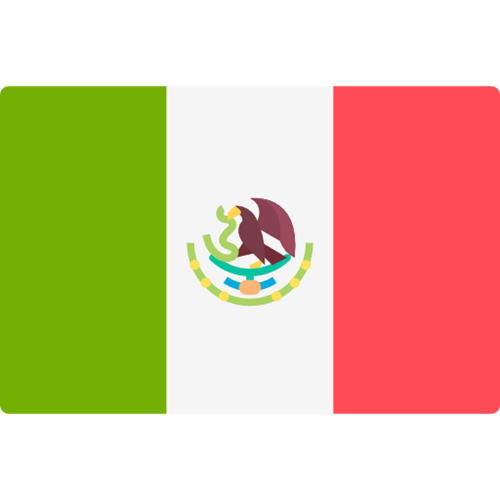Harmonized Quoting Information

Phase Appropriate Method Establishment
The effort undertaken to establish an individual test method at our facility is known as method establishment. Methods can be ones provided by customers or they can be developed at our facility as a service to customers. The FDA requires that the methods undergo analytical validation prior to being used for drug release specifications. If the method is already validated but being transferred to another facility, then analytical transfer to the new facility via a method transfer protocol would be performed. The objective of validation or qualification is to demonstrate a method is suitable for its intended purpose. The objective of transfer or verification is to demonstrate the receiving laboratory is able to execute the method successfully and attain expected results in that laboratory environment.
The purpose of pre-protocol testing (Method Feasibility or Method Development) is to evaluate the performance of the method prior to formal evaluation during GMP validation, qualification, verification, or transfer studies. This testing is used to demonstrate that the method could be successfully validated or executed and is without major flaws or design issues. Appropriate protocol acceptance criteria must be established for each method performance characteristic and testing element. The final protocol uses the data collected during the pre-protocol testing study and the product specification to establish criteria for the GMP study. If method development is performed, the pre-protocol method evaluation study will be part of method development.
Method Development may be requested to accomplish testing when a full method is not available. The technical staff is organized by technique and technical expertise to have Subject Matter Experts (SME) available for development studies. The laboratory will select technical staff to accommodate the approach desired by the customer. If the customer does not recommend a method approach, then the SME should recommend a technically feasible approach. Method Development results in non-GMP data. At the conclusion of Method Development, a method will be created with an investigational status. If the method will be validated, then a pre-protocol method evaluation study must be performed as part of the method development.
Method Feasibility is an informal study. Method Feasibility is often required for methods for which the business unit has no prior experience. Methods which may require feasibility include new compendia monographs, vendor methods, or validated customer provided methods. The purpose of feasibility is to establish suitability of the method to the intended use and the sample matrix. Feasibility studies include the evaluation of the laboratory’s analytical set-up, verification that the procedure can be executed as written, establishment of system suitability, and confirmation that chromatography/ sample results can be replicated (if applicable). For GMP release testing, method feasibility is not enough to satisfy regulatory inquiries for methods which have not been previously validated or verified.
Method Validation is the process of proving that a method is acceptable for its intended use in late phase drug development. An analytical method should be validated by performing laboratory studies which establish that the performance characteristics of the method meet the requirements of the intended analytical applications. Method validation is performed for any materials where GMP data will be required. This includes materials that are late phase compounds and methods used for product release. These methods initially undergo pre-protocol method evaluation. Following the initial establishment study and method writing, a protocol is designed to perform validation in accordance with compendia or ICH guidelines. Method validation parameters differ depending on the purpose of the test and the technique. At the conclusion of validation, a formal validation study report is generated.
The Pricing for Method Validation to Support a Large Molecule Drug Product typically includes:
|
Parameter |
UV Protein Content |
Cell Assays and ELISA |
Chromatographic Purity |
Electrophoresis Purity |
ICP Quantitative Impurities |
|
Method Precision and Repeatability |
X |
X |
X |
X |
X |
|
Intermediate Precision |
X |
X |
X |
X |
X |
|
Linearity |
X |
X |
X |
X |
X |
|
Accuracy and Range |
X |
X |
X |
X |
X |
|
Quantitation Limit |
|
|
X |
X |
X |
|
Detection Limit |
|
|
X |
X |
|
|
Specificity - Matrix Interference |
X |
X |
X |
X |
X |
|
Specificity - Forced Degradation |
|
X |
X |
X |
|
|
Specificity - Related Substances |
|
|
X |
|
|
|
Specificity - Non-Specific Molecule |
|
X |
|
|
|
|
Stability Indicating Property |
|
X |
|
|
|
|
Solution Stability |
X |
|
X |
X |
X |
|
Robustness |
|
X |
X |
X |
|
|
Written Report |
X |
X |
X |
X |
X |
The Pricing for Method Validation to Support a Small Molecule Drug Product typically includes:
|
Parameter |
HPLC Assay/Related |
HPLC Dissolution |
Karl Fischer Water |
ICP Quantitative Impurities |
Identification Tests |
|
Method Precision and Repeatability |
X |
X |
X |
X |
X |
|
Intermediate Precision |
X |
X |
X |
X |
X |
|
Linearity |
X |
X |
|
X |
|
|
Accuracy and Range |
X |
X |
|
X |
|
|
Quantitation Limit |
X |
|
|
X |
|
|
Detection Limit |
X |
|
|
|
|
|
Specificity |
|
|
X |
X |
X |
|
Specificity - Placebo Components |
X |
X |
|
|
|
|
Specificity - Forced Degradation |
X |
|
|
|
|
|
Specificity - Related Substances |
X |
|
|
|
|
|
Solution Stability |
X |
X |
|
X |
|
|
Robustness |
X |
X |
X |
|
|
|
Written Report |
X |
X |
X |
X |
X |
The Pricing for Method Validation to Support Container Closure Integrity typically includes:
|
Parameter |
Visual Dye Immersion or Bubble Emission |
UV Dye Immersion |
Vacuum Decay, Pressure Decay, or HVLD |
Helium Leak or Oxygen Headspace |
|
Method Precision and Repeatability |
X |
X |
||
|
Intermediate Precision |
X |
X |
||
|
System Precision |
X |
|
|
|
|
Controls and Sample Analysis |
X |
X |
|
|
|
Linearity |
|
X |
||
|
Accuracy and Range |
X |
X |
||
|
Quantitation Limit |
|
|
X |
|
|
Detection Limit |
|
X |
X |
X |
|
Specificity |
|
|
X |
X |
|
Written Report |
X |
X |
X |
X |
Method Qualification is the process of proving the acceptability of an analytical method when the product is still in an early phase of drug development (pre-phase 3). At a minimum, the procedure must be scientifically sound, generally suitable for its intended purpose and stage of product development, and capable of generating reliable results. Method Qualification is a scaled down and phase appropriate version of Method Validation. Method Qualification demonstrates method suitability of use for early phase studies where a full ICH validation may not be required. It may include replicate analysis and minimal spiking, depending on the goal of the test and use of the data. Consultation with the customer is required prior to establishing the scope of studies.
The Pricing for Method Qualification to Support a Large Molecule Drug Product typically includes:
|
Parameter |
UV Protein Content |
Cell Assays and ELISA |
Chromatographic Purity |
Electrophoresis Purity |
|
Method Precision and Repeatability |
X |
X |
X |
X |
|
Intermediate Precision |
X |
|||
|
Linearity |
X |
X |
X |
X |
|
Accuracy and Range |
X |
X |
X |
X |
|
Quantitation Limit |
|
|
X |
X |
|
Specificity - Matrix Interference |
X |
X |
X |
X |
|
Specificity - Forced Degradation |
|
X |
||
|
Specificity - Non-Specific Molecule |
|
X |
|
|
|
Stability Indicating Property |
|
X |
|
|
|
Solution Stability |
X |
|
X |
X |
|
Written Report |
X |
X |
X |
X |
The Pricing for Method Qualification to Support a Small Molecule Drug Product typically includes:
|
Parameter |
HPLC Assay/Related |
HPLC Dissolution |
Karl Fischer Water |
Identification Tests |
|
Method Precision and Repeatability |
X |
X |
X |
X |
|
Linearity |
X |
X |
|
|
|
Accuracy and Range |
X |
X |
|
|
|
Quantitation Limit |
X |
|
|
|
|
Specificity (placebo or matrix interference) |
X |
|
X |
X |
|
Solution Stability |
X |
X |
|
|
|
Robustness |
|
|
X |
|
|
Written Report |
X |
X |
X |
X |
GMP Early Phase Feasibility is the process of proving the acceptability of an analytical method when the product is still in phase I of the drug development process. Validation of analytical procedures is usually not required for original IND submissions for Phase I studies; however, studies should demonstrate that test methods are appropriately controlled. In general, scientifically sound principles for assay performance should be applied (i.e., tests should be specific, sensitive, and reproducible and include appropriate controls or standards). Method Feasibility studies are performed to demonstrate that a scientifically sound method can be leveraged to support a product.
Method Transfer is the process where after a method is validated, the method may be transferred to a laboratory other than the established laboratory. A transfer protocol should be executed to verify that another laboratory can successfully perform the method and thereby qualify the laboratory to perform official testing. Method transfer is performed for methods which were previously validated, and which must be installed at a new location. Frequently this type of study is designed with the customer. Two parties, the originating laboratory, and the receiving laboratory, may collaborate to accomplish method transfer (Inter-laboratory Transfer). The laboratory should request a copy of the validation report to prepare a transfer protocol. Method Feasibility may be required prior to formal transfer. If the originating laboratory is unable to participate in the transfer activity, then transfer by partial validation may be performed by the receiving laboratory. The guidance for method validation studies must be consulted to ensure the appropriate elements of validation are selected for any method transfer studies which use the partial-validation approach. In some cases where the method was not previously validated, method validation and transfer will occur simultaneously in a single protocol. If transfer is being included in a full validation study, inter-laboratory comparison through precision studies is a minimum requirement. At the conclusion of transfer, a formal transfer study report is generated.
Method Transfer is based on the assumption data is available for comparison and the method has been previously validated. To support Large Molecule Drug Products, the pricing typically includes:
|
Parameter |
UV Protein Content |
Cell Assays and ELISA |
Chromatographic Purity |
Electrophoresis Purity |
|
Precision and Data Comparison |
X |
X |
X |
X |
|
Accuracy |
X |
|||
|
Quantitation Limit |
|
|
X |
X |
|
Solution Stability |
|
X |
X |
|
|
Written Report |
X |
X |
X |
X |
Method Transfer is based on the assumption data is available for comparison and the method has been previously validated. To support Small Molecule Drug Products, the pricing typically includes:
|
Parameter |
HPLC Assay/Related |
HPLC Dissolution |
KF Water |
Identification Tests |
|
Precision and Data Comparison |
X |
X |
X |
X |
|
Quantitation Limit |
X |
|
|
|
|
Written Report |
X |
X |
X |
X |
Method Verification is the process used to establish that a laboratory can obtain the expected values from Compendial Methods. ‘Compendial Methods’ are those procedures which are listed in a USP (or EP, JP, etc.) published monograph. The fact the procedures are listed in a published monograph, implies they have been previously validated. Test articles without a monograph are non-compendial and imply the methods may not have been validated. 21 CFR 211.194 states that users of analytical methods in the USP-NF are not required to validate the accuracy and reliability of the methods, but merely verify their suitability under actual conditions of use. Verification is performed as directed by protocol. To establish suitable criteria in the protocol, method feasibility is performed prior to Verification. Method Verification includes replicate trials for each test, executed by one or two analysts. For some tests, the elements of Accuracy, Specificity, and LOQ may be implemented as part of the Verification study as defined by USP <1226> and USP <1225>. The study design may be customized to individual customer needs. At the conclusion of verification, a formal verification study report is generated.















































